- Common dairy cow vaccine specifications and methods of use
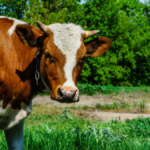 by DSBRToThere are several commonly used cow vaccines, and the methods of use are detailed below. 1. Non-toxic anthrax sporeling. Against bovine anthrax. 1 mL is injected subcutaneously in the cowhide over 1 year old; 0.5 mL is injected subcutaneously under 1 year old. Generally, system immunity develops 14 days after injection. The protection period is …
by DSBRToThere are several commonly used cow vaccines, and the methods of use are detailed below. 1. Non-toxic anthrax sporeling. Against bovine anthrax. 1 mL is injected subcutaneously in the cowhide over 1 year old; 0.5 mL is injected subcutaneously under 1 year old. Generally, system immunity develops 14 days after injection. The protection period is …Common dairy cow vaccine specifications and methods of use Read More »
- AUTUMN LAWN CARE
 by DSBRAutumn is the time for lawn renovations. The soil is still warm and the grass has entered a vegetative growth stage, meaning it has finished trying to flower and is preparing itself for the coming colder weather by making more carbohydrates and growing more shoots instead of leaf. Renovation work can be hard on the …
by DSBRAutumn is the time for lawn renovations. The soil is still warm and the grass has entered a vegetative growth stage, meaning it has finished trying to flower and is preparing itself for the coming colder weather by making more carbohydrates and growing more shoots instead of leaf. Renovation work can be hard on the … - What are the common chicken diseases in spring
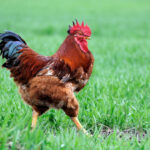 by DSBR1, the spring temperature change, day and night temperature difference, temperature high and low, easy to cause stress reaction in chickens. Causes the organism’s resistance to drop, causes the disease 2, the Chicken House is too strict, reduced the chicken house ventilation frequency, or raises the density to be too big, causes the chicken house …
by DSBR1, the spring temperature change, day and night temperature difference, temperature high and low, easy to cause stress reaction in chickens. Causes the organism’s resistance to drop, causes the disease 2, the Chicken House is too strict, reduced the chicken house ventilation frequency, or raises the density to be too big, causes the chicken house … - What does the harm of Chicken Louse have?
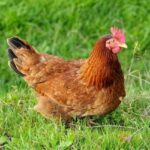 by DSBROne, chicken louse pathogen, chicken louse usually parasitizes only on chicken body, it is a kind of forever. For persistent parasites, the whole life cycle of the parasite occurs in the body of the chicken, which can live for several months, but can die 5-7 days after leaving the host. Chicken Louse is a common …
by DSBROne, chicken louse pathogen, chicken louse usually parasitizes only on chicken body, it is a kind of forever. For persistent parasites, the whole life cycle of the parasite occurs in the body of the chicken, which can live for several months, but can die 5-7 days after leaving the host. Chicken Louse is a common … - Six notes on the application of penicillin veterinary drugs
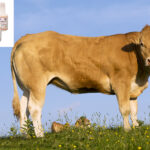 by DSBRThe mechanism of action of penicillin veterinary drugs is to interfere with the synthesis of bacterial cell wall, and the synthesis of cell wall takes place in the breeding period of bacteria. Penicillin veterinary drugs have a killing effect on the bacteria in the breeding period, therefore calls the penicillin class veterinary medicine for the …
by DSBRThe mechanism of action of penicillin veterinary drugs is to interfere with the synthesis of bacterial cell wall, and the synthesis of cell wall takes place in the breeding period of bacteria. Penicillin veterinary drugs have a killing effect on the bacteria in the breeding period, therefore calls the penicillin class veterinary medicine for the …Six notes on the application of penicillin veterinary drugs Read More »
- Common Infectious Disease in sheep — virus of sheep
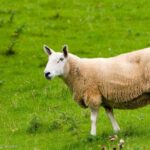 by DSBRThis disease is caused by clostridium putrefaciens and is an acute infectious disease of sheep. Characterized by sudden onset of bacterial disease and short quilt, true stomach bleeding, inflammatory damage. (1) epidemic features: CLOSTRIDIUM PUTREFACIENS is commonly found in low-lying grasslands, cultivated land and swamps in the form of spores. Sheep feed and drinking water …
by DSBRThis disease is caused by clostridium putrefaciens and is an acute infectious disease of sheep. Characterized by sudden onset of bacterial disease and short quilt, true stomach bleeding, inflammatory damage. (1) epidemic features: CLOSTRIDIUM PUTREFACIENS is commonly found in low-lying grasslands, cultivated land and swamps in the form of spores. Sheep feed and drinking water …Common Infectious Disease in sheep — virus of sheep Read More »
- Sheep ketonuria
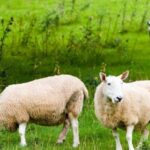 by DSBRSheep ketonuria: in late winter and early spring, when the ewe is undernourished in the late pregnancy, the maternal metabolic balance is destroyed, resulting in the disorder of fat metabolism in the body, incomplete fat oxidation and the formation of intermediate products (mainly ketone substances), then ketonuria is formed. The breath and urine of the …
by DSBRSheep ketonuria: in late winter and early spring, when the ewe is undernourished in the late pregnancy, the maternal metabolic balance is destroyed, resulting in the disorder of fat metabolism in the body, incomplete fat oxidation and the formation of intermediate products (mainly ketone substances), then ketonuria is formed. The breath and urine of the … - Basic knowledge of raising sheep for beginners
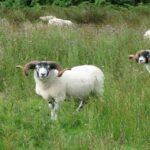 by DSBRBasic knowledge of raising sheep 1, to be prepared to raise sheep is not like a job, as long as they obey the Command, on time every day can go to work, do not have to pay too much energy. And once you start raising sheep, you have to think about everything, you have to …
by DSBRBasic knowledge of raising sheep 1, to be prepared to raise sheep is not like a job, as long as they obey the Command, on time every day can go to work, do not have to pay too much energy. And once you start raising sheep, you have to think about everything, you have to … - The complete science of sheep breeding?
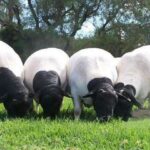 by DSBRI believe that in many people’s eyes sheep should be regarded as a very simple work, even so if you do not know sheep can not raise good sheep, sheep novice need to have what basic knowledge? What are the scientific techniques for raising sheep? It is well known that sheep have four stomachs (Rumen, …
by DSBRI believe that in many people’s eyes sheep should be regarded as a very simple work, even so if you do not know sheep can not raise good sheep, sheep novice need to have what basic knowledge? What are the scientific techniques for raising sheep? It is well known that sheep have four stomachs (Rumen, … - Duck vitamin B 2 deficiency
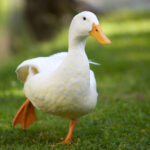 by DSBRDuck vitamin B 2 deficiency is a kind of nutritional and metabolic disease, which is caused by the deficiency of vitamin B 2 in ducklings. It is characterized by slow growth, web-clawed feet curled to rat race and paralysis, it is common in clinic. Clinical symptoms and pathological changes, clinical symptoms: Slow Growth and development …
by DSBRDuck vitamin B 2 deficiency is a kind of nutritional and metabolic disease, which is caused by the deficiency of vitamin B 2 in ducklings. It is characterized by slow growth, web-clawed feet curled to rat race and paralysis, it is common in clinic. Clinical symptoms and pathological changes, clinical symptoms: Slow Growth and development …
Shopping Cart